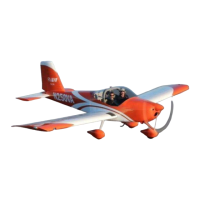What causes abnormal engine noise in Van's Aircraft Tools?
- RRussell AllenSep 9, 2025
Abnormal engine noise in Van's Aircraft Tools can be attributed to a damaged or leaking exhaust system or an open passage in the firewall.

What causes abnormal engine noise in Van's Aircraft Tools?
Abnormal engine noise in Van's Aircraft Tools can be attributed to a damaged or leaking exhaust system or an open passage in the firewall.
What causes excessive rattling in Van's Aircraft Tools?
Excessive rattling in Van's Aircraft Tools may be due to loose fasteners or loose baggage.
What causes erroneous engine status in Van's Aircraft Tools?
Erroneous engine status in Van's Aircraft Tools can result from a malfunctioning sensor, a loose connection, or a malfunctioning EMS.
| Manufacturer | Van's Aircraft |
|---|---|
| Crew | 1 |
| Capacity | 2 |
| Max Takeoff Weight | 1, 320 lb (599 kg) |
| Engine | Rotax 912 ULS |
| Horsepower | 100 hp (75 kW) |
| Fuel Capacity | 20 US gal (76 L) |
| Service Ceiling | 14, 000 ft (4, 267 m) |
| Type | Light-sport aircraft |
| Length | 20.5 ft (6.25 m) |
| Empty weight | 760 lb (345 kg) |
| Cruise Speed | 120 mph (193 km/h) |
| Stall Speed | 48 mph (77 km/h) |
| Rate of Climb | 800 ft/min |
Contact details for Van's Aircraft, Inc. for SLSA aircraft.
Information for recovery of certification documentation if Van's Aircraft Inc. ceases operation.
Informs pilot of RV-12 features/systems. Recommends familiarity with manual prior to flight.
Defines the meaning of WARNING, CAUTION, and NOTE used throughout the manual.
Lists power plant and airframe operating limitations indicated in the aircraft.
Specifies approved operation categories (Light Sport) and prohibited conditions (night, IFR).
Details VSO, VS, VFE, VO, VNO, VNE speeds and their definitions.
Provides service ceiling and flight load factor limits for the aircraft.
Covers tachometer, temperature, pressure, fuel type, and unusable fuel limits.
Describes instrument markings, passenger warnings, and miscellaneous placards.
Covers recommended procedures for emergency/adverse conditions, pilot judgment.
Details engine and electrical fire procedures during start, flight, and aftermath.
Outlines procedures for low voltage, high voltage, and voltage regulator failures.
Covers failure on takeoff, air restart, partial loss, and abnormal oil indications.
Provides guidance for precautionary, forced, and ditching landings.
Addresses turbulence, stalls, spins, runaway trim, loss of controls, overstress, icing.
Checklists for cabin, wings, fuselage, empennage, landing gear, and nose section.
Procedures for powering up EFIS, passenger briefing, and engine start sequence.
Covers taxi operations, run-up, and various take-off types (normal, obstacle, soft field).
Details procedures for climbing, cruise flight, descent, landing, and engine shutdown.
Provides calibrated vs. indicated airspeeds and stall speeds by flap position.
Data tables for take-off distance and climb rate at various altitudes and temperatures.
Information on landing distances and cruise performance parameters (speed, fuel burn, range).
Specifies maximum weight, CG range, baggage limit, and passenger weight.
Provides sample loading problems, aircraft loading tables, and graphical representations.
Graphical representation of the aircraft's operational flight envelope.
Overview of the RV-12 as an all-metal, two-place, low-wing S-LSA aircraft.
Details Rotax 912 ULS engine, Sensenich propeller, and combined flaperon/aileron controls.
Lists exterior dimensions, weights, loadings, speed, ground performance, and climb data.
Illustrates instrument panel layout, electrical system, and fuse panel diagrams.
Factory recommended procedures for ground handling and routine service, including torques.
Guidelines for fueling, oil type/viscosity, and coolant specifications.
Details tire inflation, spark plug type, exhaust lubrication, and wing installation/removal.
Procedures for towing, securing the aircraft, and cleaning surfaces.
Refers to the Flight Training Supplement for additional information.
